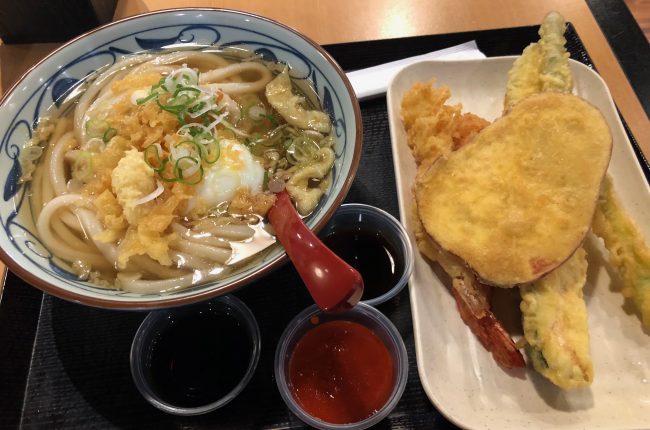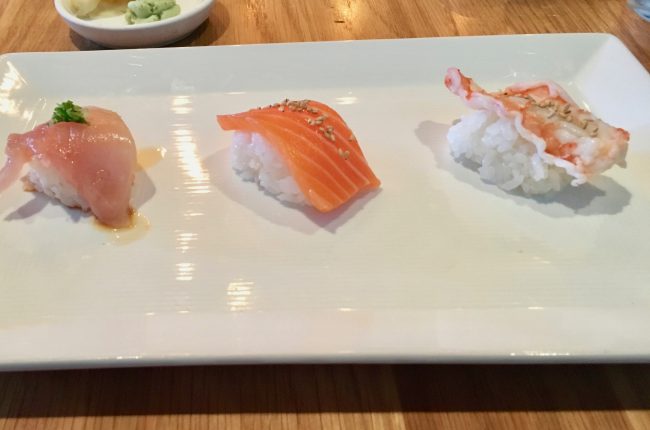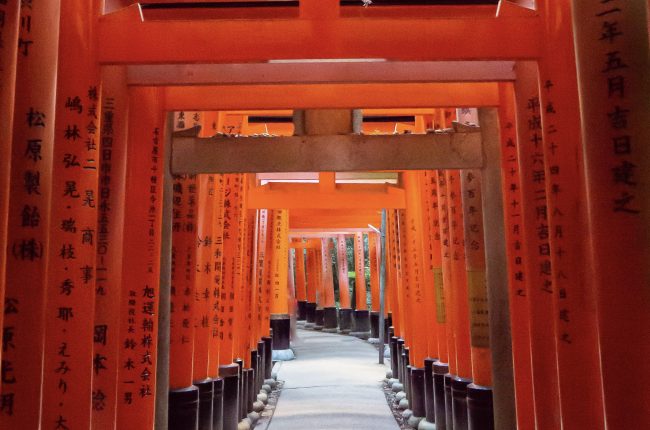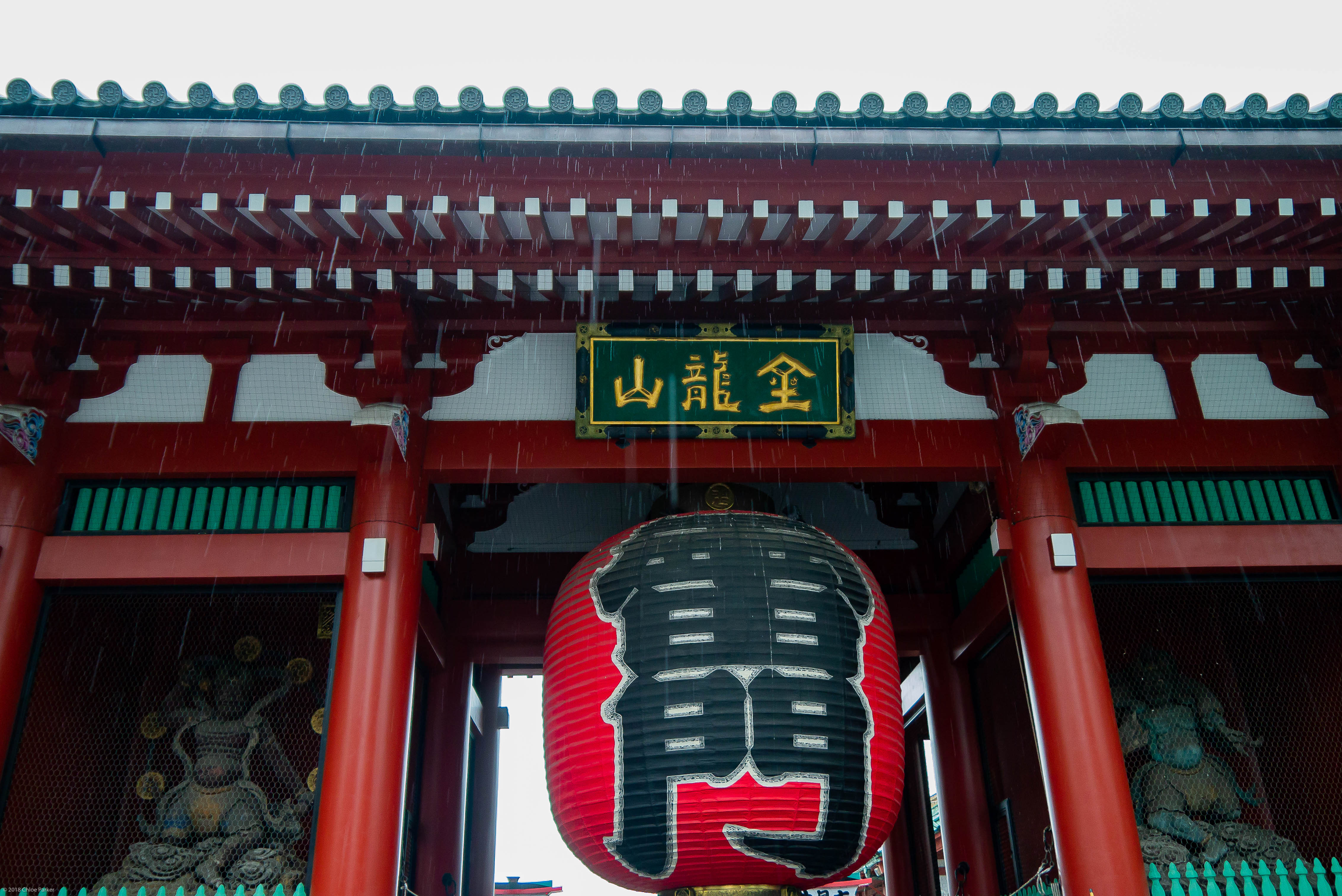
This summer, I traveled through East Asia with my family. We had a blast! We spent just over 2 weeks (16 days) traveling through China, Korea, and Japan. However, this trip is not for the faint of heart! Ever day was packed full and we were EXHAUSTED by the end of it (honestly, we were pretty exhausted after the first few days), so embark on this trip at your own risk. We traveled in late June/early July, and it was HOT and pretty muggy! But it wasn’t that crowded for being in summer and, according to some locals, it gets hotter in July and August. So I still think late-June was a good time to travel.
For the sake of clarity, I’m breaking down my itinerary for each leg of the trip individually. You can read my itineraries for Beijing (https://www.lavitabloger.com/the-complete-travel-guide-for-beijing-china/), Seoul (https://www.lavitabloger.com/seoul-korea/), Tokyo Disney Resort (https://www.lavitabloger.com/tokyo-disney-resort/) and Kyoto (https://www.lavitabloger.com/24-hours-in-kyoto/). Next, we are on to Tokyo, Japan!
We actually ended up spending the most time in Japan (about 6 1/2 days) because there were a few highlights we wanted to hit: Tokyo, Kyoto, and the Tokyo Disney Resort. Our first stop in Japan was Tokyo!
First, a few things about Tokyo:
- The Tokyo subway system is not nearly as good as that in Beijing or Seoul. The lines are owned by different private companies, which makes it pretty expensive if you have to make transfers. If you’re traveling solo, you might still want to consider using the metro, but if you’re traveling in a family it will probably be less expensive to take a cab to the locations that are too far to walk.
- There are no public trash cans in Tokyo, so throw away your trash before you leave a location, or be prepared to carry it around with you for a while. A lot of Japanese women will carry plastic bags in their purse to use as a trashcan until they can get home.
- When riding on escalators, stand to the left, that way theres room for people who want to walk to pass you on the right.
Top 10 Things to Do in Tokyo
- Join in on the hustle and bustle of the Shibuya intersection
- Eat sushi from a conveyor belt
- Watch a baseball game at the Tokyo Dome
- Experience the magic of Tokyo Disney Resort (post to come)
- Embrace your inner Harajuku Girl
- Eat or drink something from one of the approximately 400,000 vending machine in Tokyo (roughly 1 for every 23 people)
- See Tokyo from above at the Tokyo City View at Mori Tower
- Take a moment to enjoy the serenity of the Meiji Shrine
- Eat some of the freshest fish at the Tsujita Fish Market
- Visit Senso-Ji Temple and shop at Nakamise
A Perfect 3 Day Itinerary
DAY 1: Shibuya
We arrived in Tokyo at around 3pm and went straight to Shibuya. Shibuya has the busiest intersection in the world, and it is so fun to run around with all the other pedestrians, taking pictures and soaking up all the hustle and bustle. They don’t call it the Shibuya Scramble for nothing! Make sure you go up to the second floor of the nearby Starbucks to see the Shibuya Scramble from above!
We stayed in the Shibuya area for the rest of the evening, walking around until we found a conveyor belt sushi restaurant that looked good. In LA, we can easily spend $100 on sushi for four people, but the sushi in Tokyo ended up being less than $75 USD! And we were not at all conservative in the amount of sushi we ate.
Shibuya also has a pretty vibrant nightlife, if you’re into that. Drinking age in Japan is 21.
DAY 2: Meiji Shrine, Harajuku, Mori Tower & Tokyo Dome
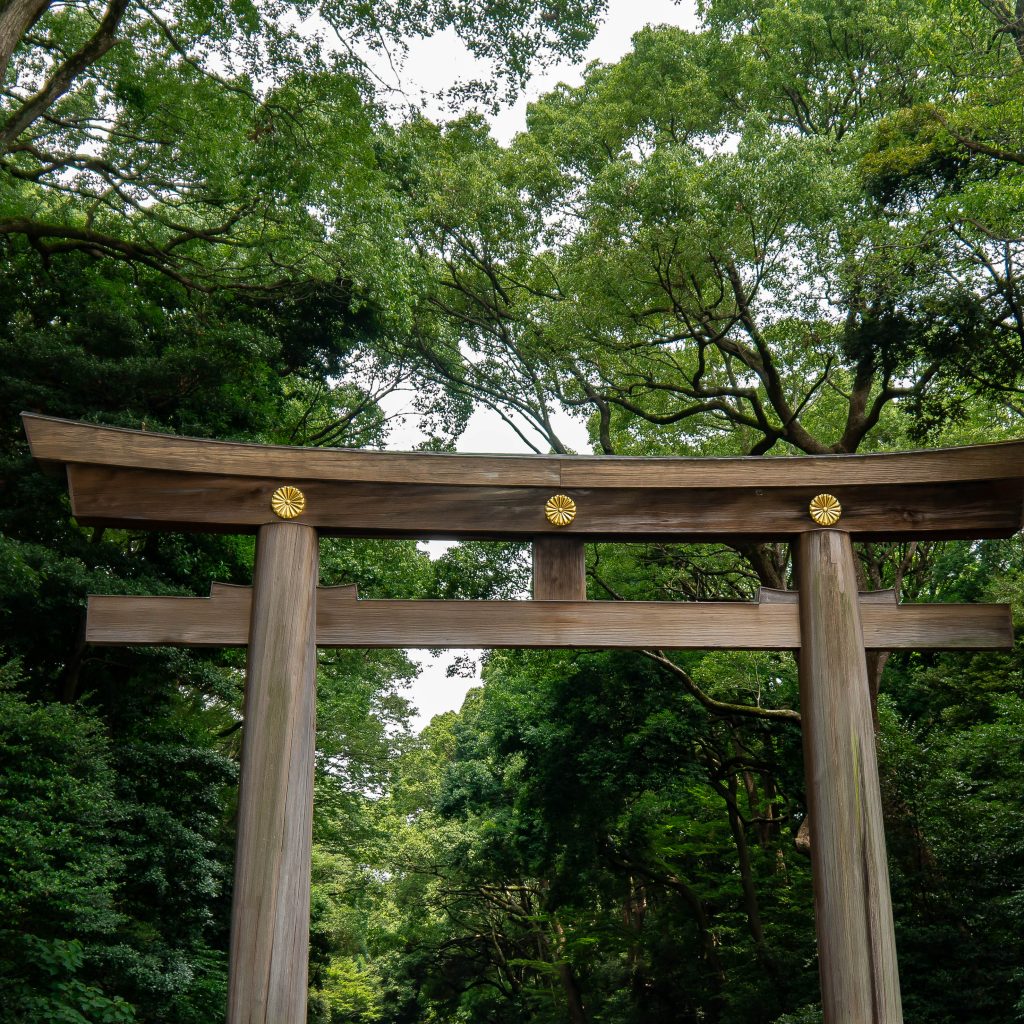
We started our day off by visiting the Meiji Shrine. Two, large wooden gates frame the entrance to this Shinto shrine that was dedicated to dedicated to the deified spirits of Emperor Meiji and his wife, Empress Shoken. The shrine is made of mostly natural wood and is surrounded by a lush, forest of trees. It is a really peaceful and beautiful area, and the wood is in stark contrast to the colorful shrines we saw in Beijing and Seoul.
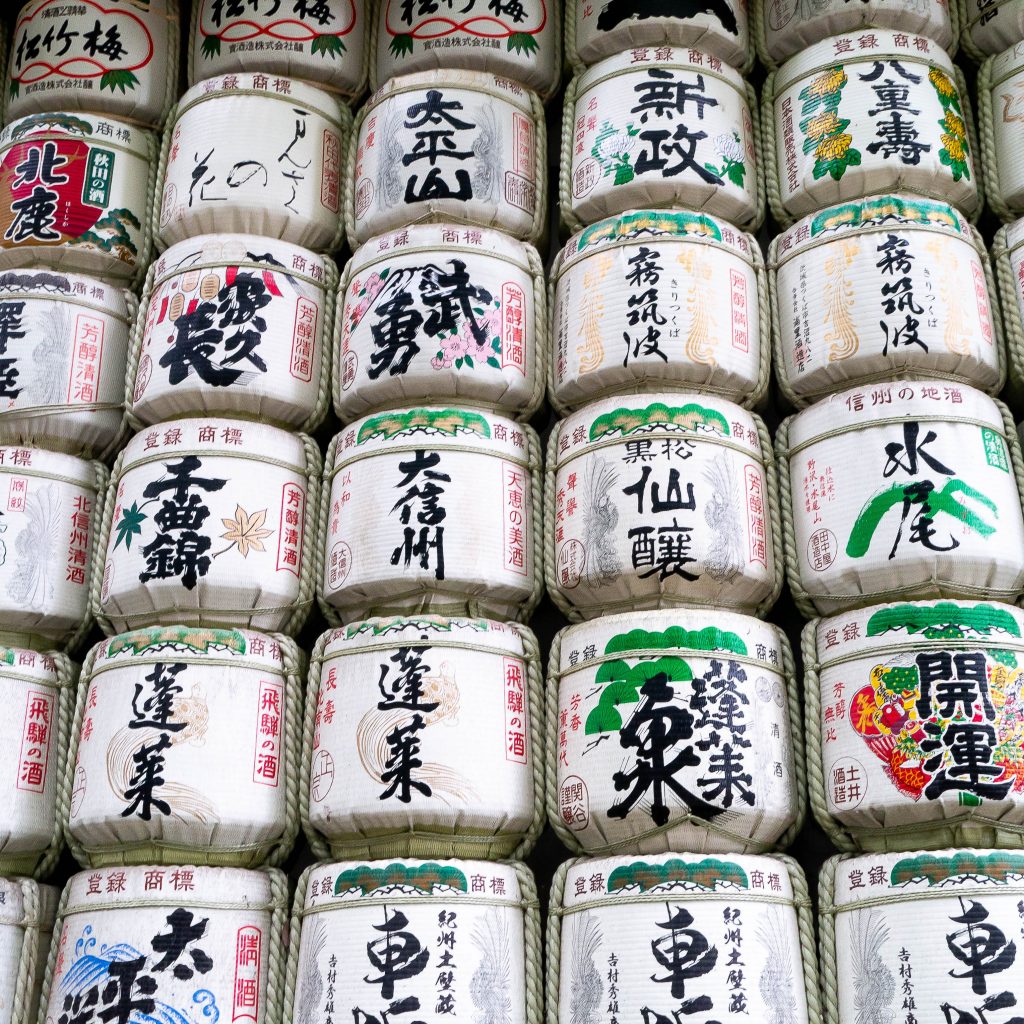
Right near the Meiji Shrine is Takeshita-dori in Harajuku! Harajuku is a district in Tokyo known internationally as the center of Japanese youth culture and fashion, and Takeshita-dori is its principal street. Make sure to stop at the Totti Candy Factory for some giant rainbow cotton candy! We ate lunch in Harajuku at Hanamaru Udon. Udon noodles are thick, wheat flour noodles usually served in soup, and one of my favorite noodle dishes!
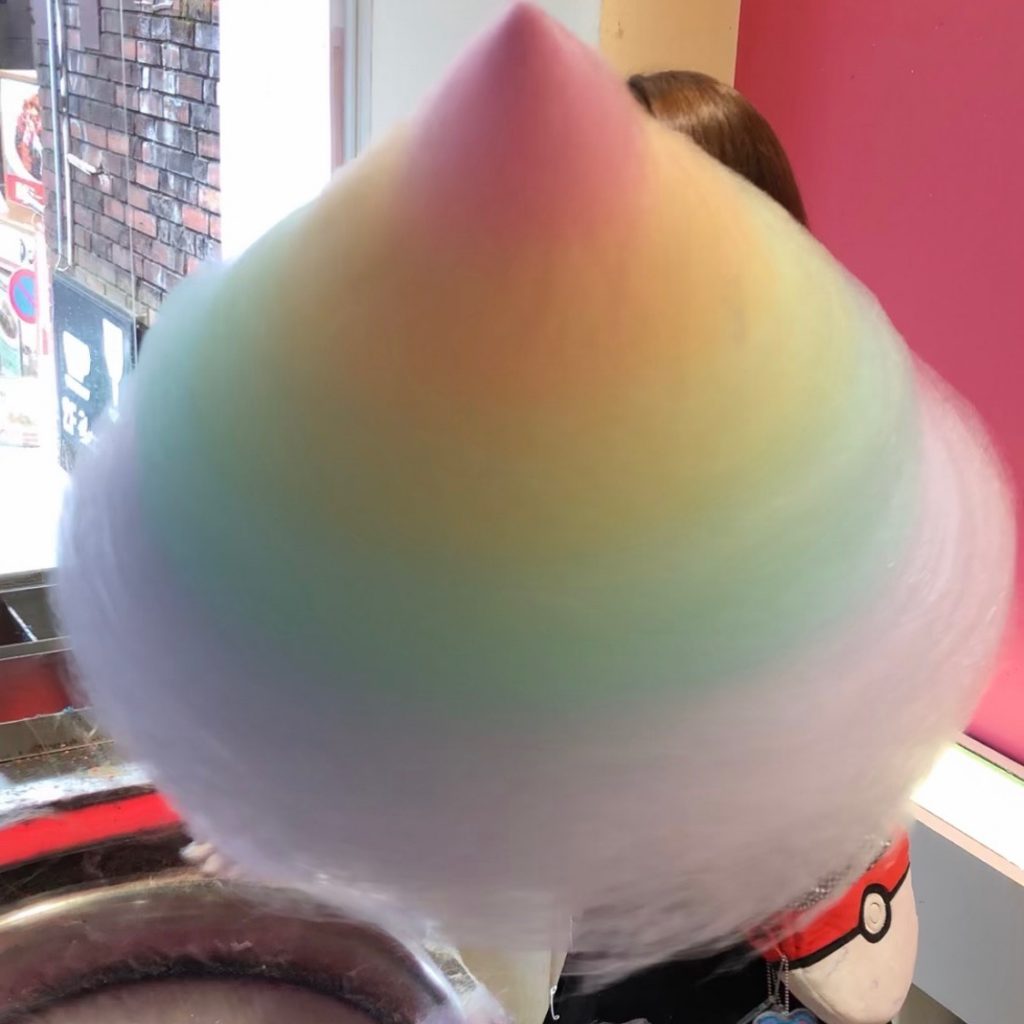
Overall, I was a little disappointed in Takeshita-dori. It feels like it has largely evolved to be catered mostly towards tourists and has lost some of its authenticity. Maybe try venturing deeper into Harajuku to experience more of the fashion and youth culture that made Harajuku famous.
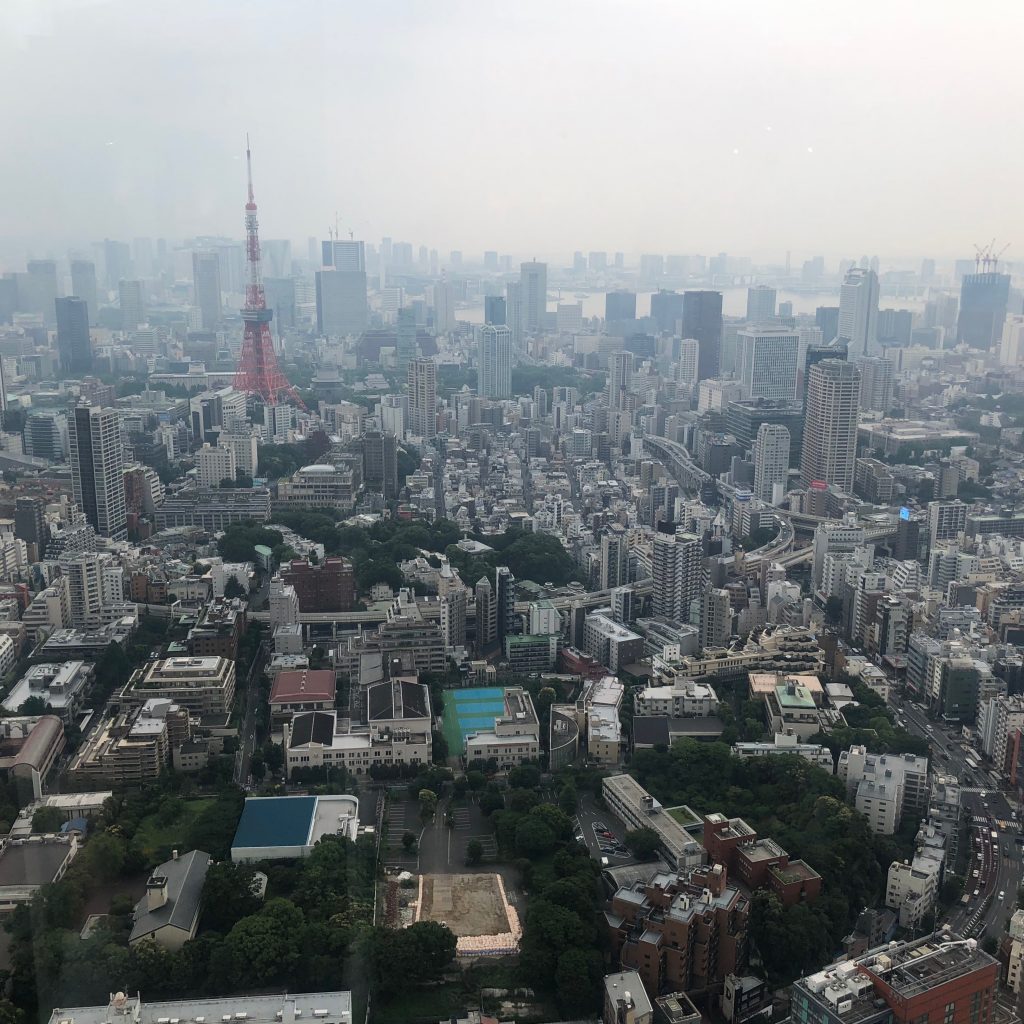
Then, we headed over to the Roppongi district to see Tokyo from above. There are a lot of ways to see Tokyo from above, but I decided on the City View and Sky Deck at Mori Tower. You can go up to the Tokyo Tower and Tokyo Skytree, but both are iconic to the Tokyo skyline, so I wanted to go somewhere where you can see both structures. Even on a rainy day, Mori Tower had some great views of Tokyo! If you’re not into baseball, and are into nightlife, you could finish your day off in Roppongi, which is known for its night club scene.
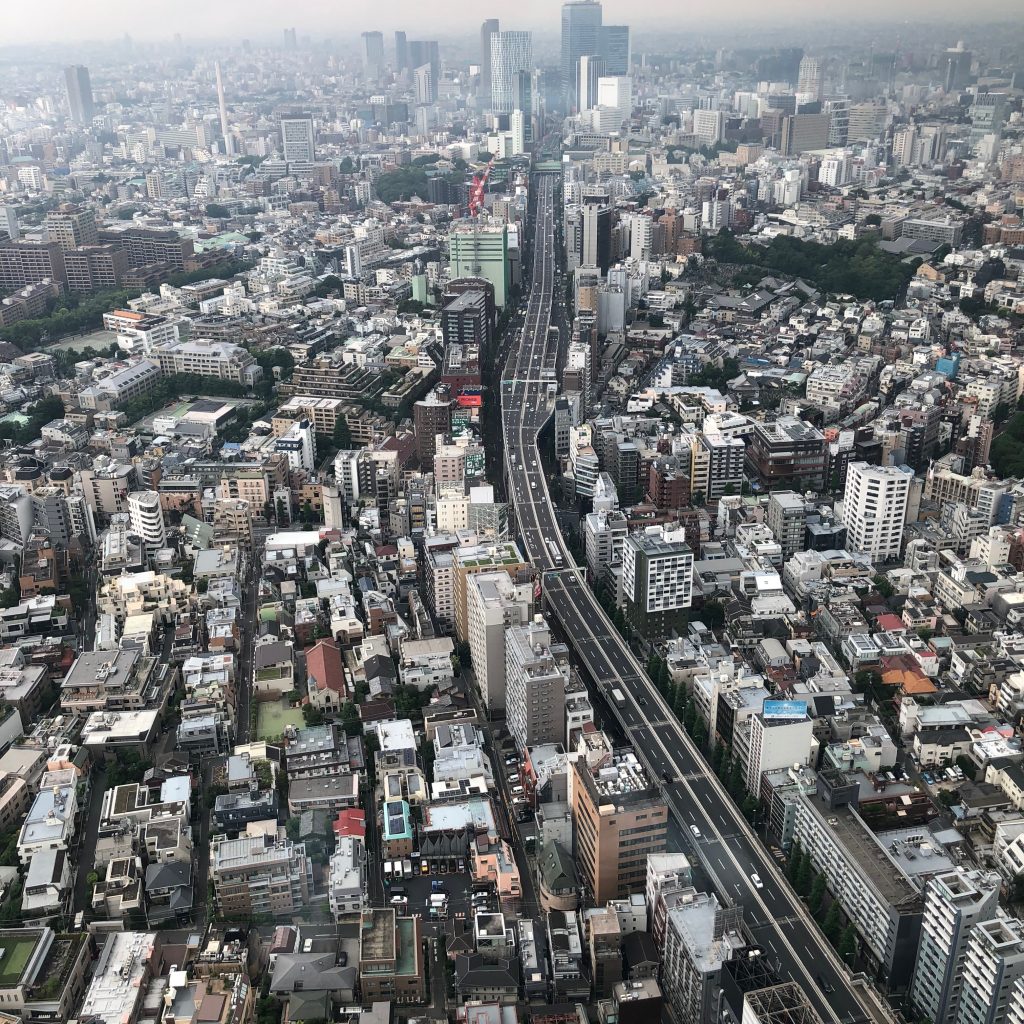
We ended our first full day in Tokyo with a baseball game at the Tokyo Dome! I had never seen a baseball game in a dome before (#GoDodgers) so I was really excited for the new experience. Seeing a baseball game in a dome is definitely different, especially when the fans are as loud and enthusiastic as the Japanese fans! There are even certain areas where you can only cheer for the home team and ones where you can only cheer for the visiting team! The food inside the park was pretty mediocre, so I’d make sure to get dinner before the game.
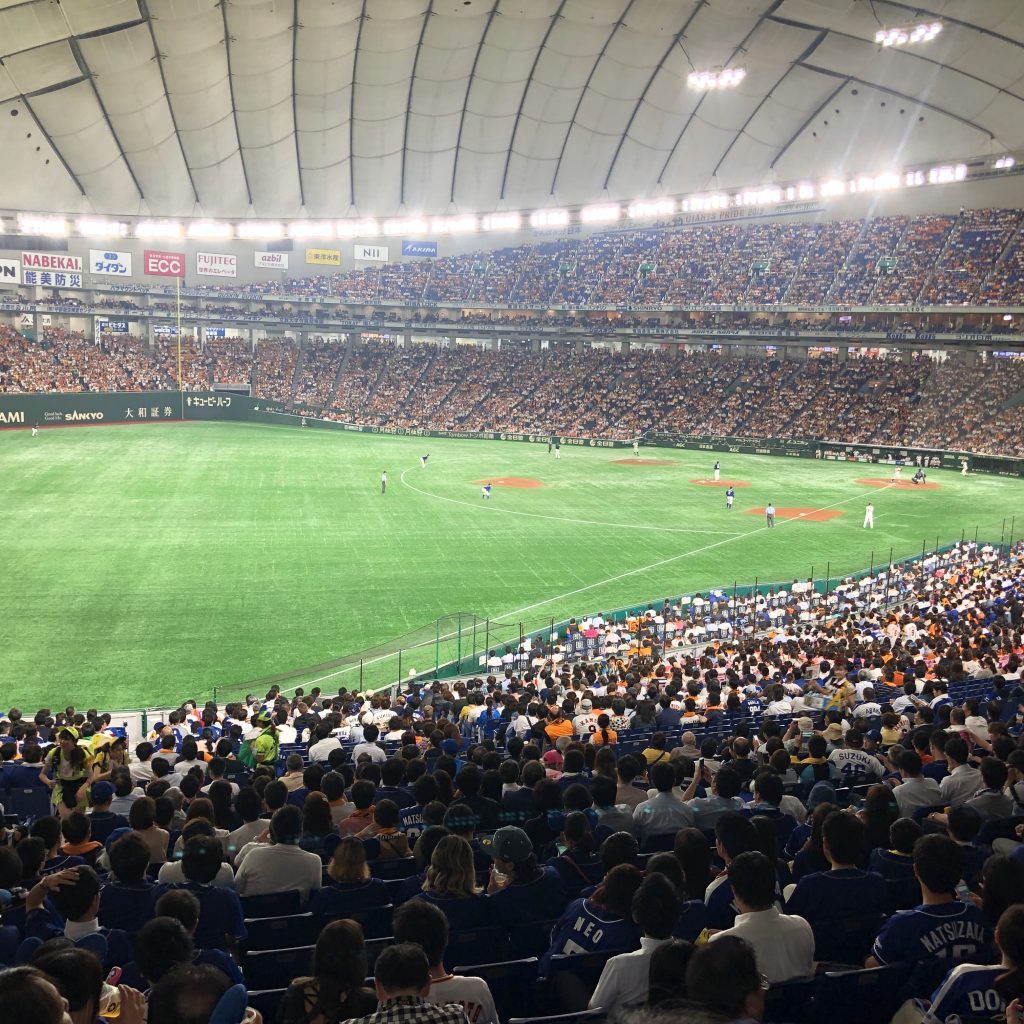
DAY 3: Tsujita Fish Market, Senso-Ji, & Nakamise
We started off our day by participated in a food tour of the Tsujita Fish Market https://www.tripadvisor.com/AttractionProductReview-g1066440-d11481567-Food_Tour_of_Tsukiji_Fish_Market-Adachi_Tokyo_Tokyo_Prefecture_Kanto.html . It was great being shown all the different food that is sold at the different stands and trying some of it, but the entire tour lasted about 3 1/2 hours, which is about 2 hours longer than it needed to, in my opinion. I’m torn about recommending this tour, because I really did enjoy everything we ate and learned about the market, but it did heavily cut into our day. We were also pretty physically exhausted by this point in our trip, so slowly walking through a market for 3 1/2 hours was not ideal. My favorite stop was the last one, where we got sushi from a stand-up counter. The fish was so fresh! In the market, we also purchased a matcha latte that was the best I’ve ever had!
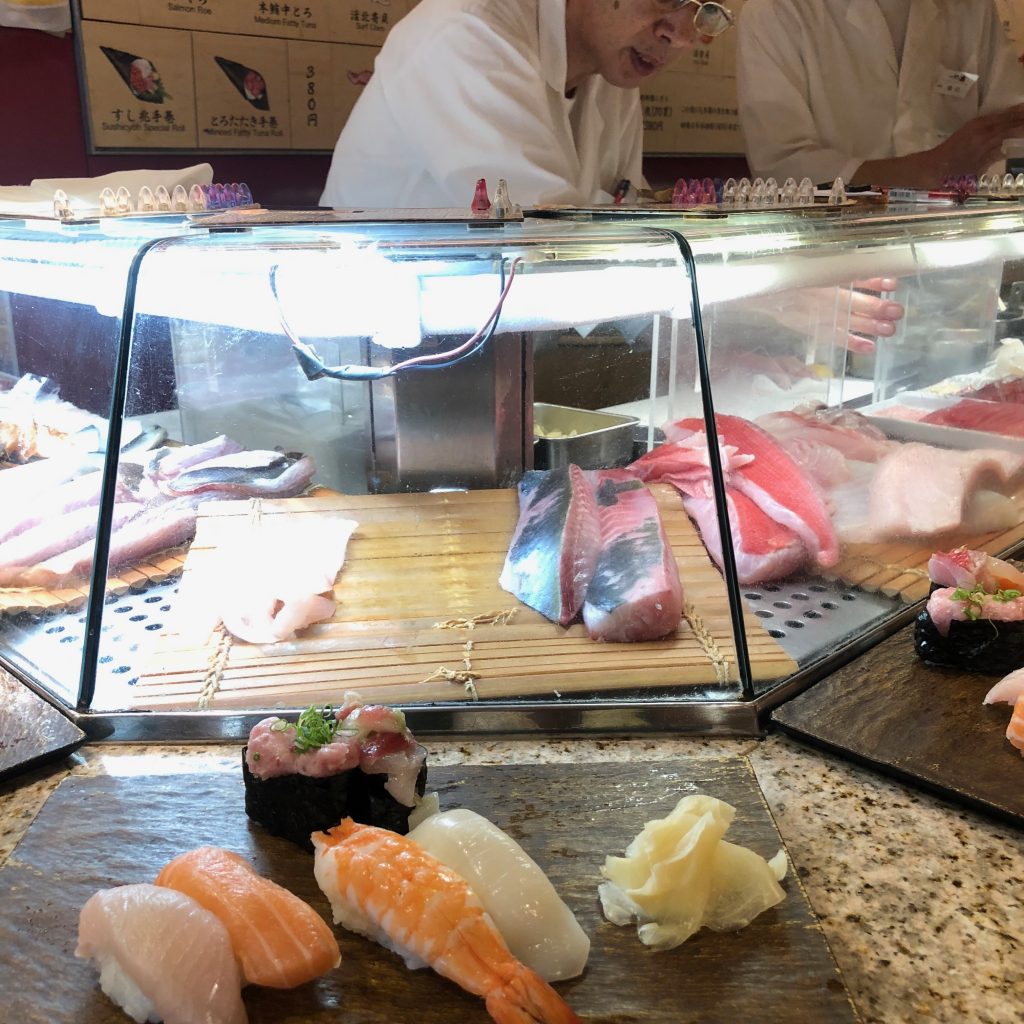
We had plans to check out Hamarikyu Gardens, but the tour lasted longer than I anticipated, and it was raining, so we decided to skip this stop.
Instead, we headed straight to Senso-Ji temple. The story of the Senso-Ji temple is that two brothers found a statue of Kannon Bosatsu, the Bodhisattva of compassion in the Sumida River. They tried to return it to the river, only to have it come back to them the next day, so they built a temple in her honor. Senso-Ji is Tokyo’s oldest and most significant Buddhist temple and the most widely visited spiritual site in the world with over 30 million visitors annually. While there, you should also check out the neighboring Asakusa Shrine, built to honor the 2 brothers.
The Senso-Ji temple was really lovely, even in the rain! I think the grey sky emphasized the brilliant red of the temple.
Note: You may notice quite a few swastikas during your time in East Asia, particularly in/on Buddhist temples. In Buddhism, it does not represent Nazism. Instead, it represents of the footprint of Buddha, symbolizing the eternal cycle of life and is often used to identify a temple as being Buddhist.
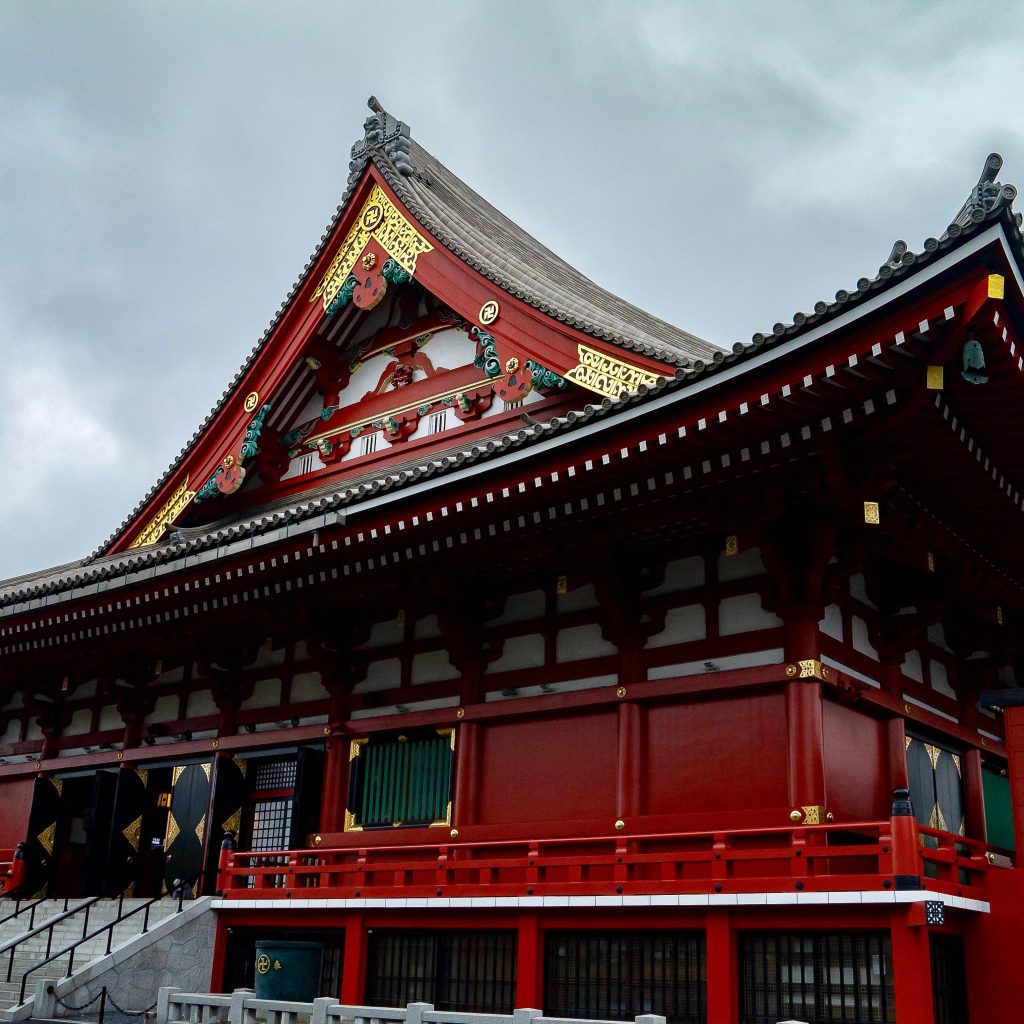
I especially had fun shopping at Nakamise. Attached to the main entrance of Senso-Ji is Nakamise, a partially covered shopping market with vendors selling a variety of food and souvenirs. It is one of Japan’s oldest shopping streets, dating back to the 17th Century.
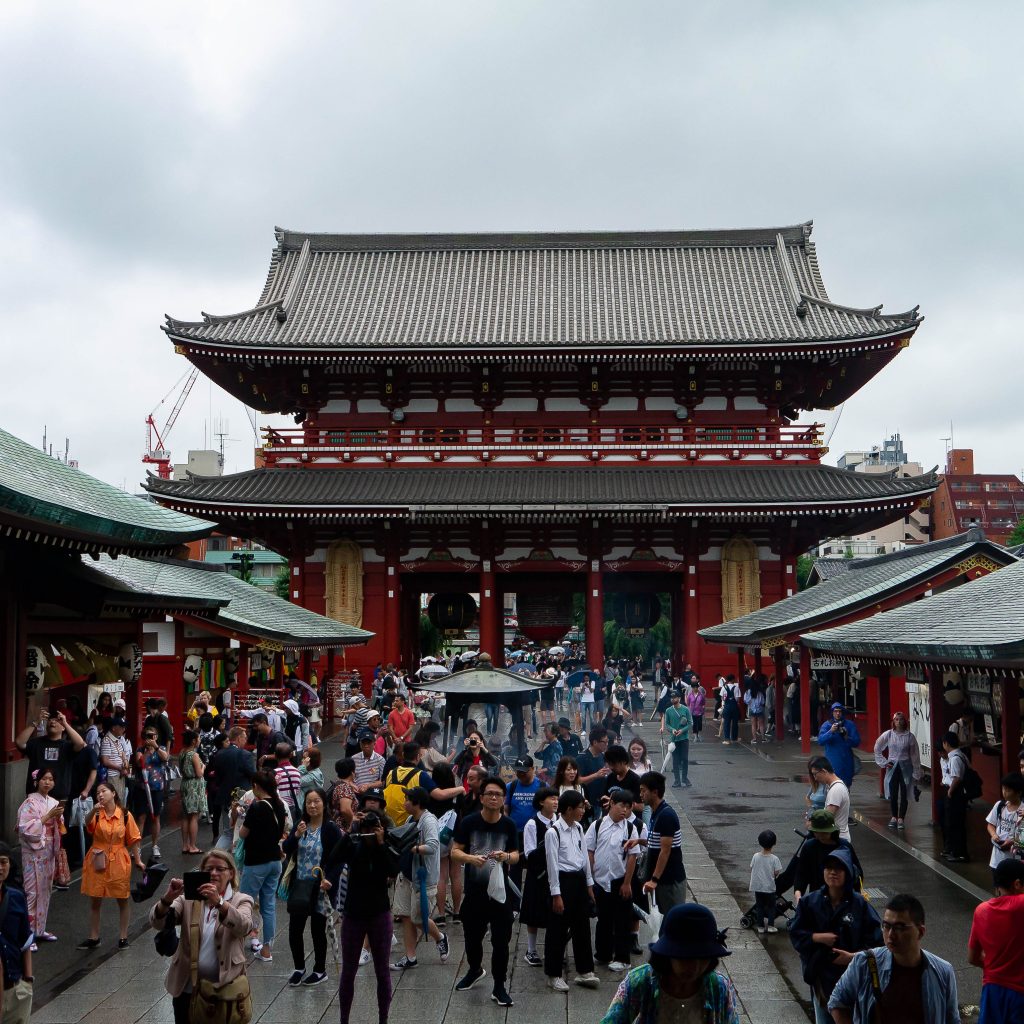
After enjoying Senso-Ji and Nakamise, we grabbed our luggage and went to our next hotel at the Tokyo Disney Resort! https://www.lavitabloger.com/tokyo-disney-resort/
I do feel like, out of all the major cities we visited, Tokyo got the most short-changed. We saw a lot of fun, wonderful things in our few days in Tokyo, but it was definitely a truncated trip. But that’s okay, it just means I’ll have to come back to Tokyo!
Because our time was so short in Tokyo, there were things that inevitably didn’t make the cut. Notably, we didn’t participate in too much of Tokyo’s renowned nightlife. I was traveling with my parents and sister, so we opted to skip most of the drinking/partying that Tokyo had to offer. If you’re interested in that, Roppongi Hills is renowned for their nightclubs, Izakaya alleys are full of popular pubs, Kabukicho is Japans biggest red light district, and Golden Gai is filled with cozy and unique, old-fashioned bars. The Robot Restaurant is also a popular stop for tourists that did not appeal to me in the slightest.
We also skipped Akihabara, known as “Electric Town.” Once where Japanese people purchased their electronics during WWII, Akihabara is now famous for its anime, manga, and video game paraphernalia. I think it would’ve been fun to see, but I’ve never been into any of those things, so it was easy to take off the itinerary when we were strapped for time.
If the weather hadn’t been so rainy, I would’ve liked to spend some time in a Japanese garden. Hamarikyu Gardens sounded lovely to me, but Ueno Park, Shinjuku Gyoen National Garden, and the Imperial Palace Garden also had great online reviews from people who had visited them.
Overall, I am very happy with my time in Tokyo and hope I can make it back here someday to see everything else!
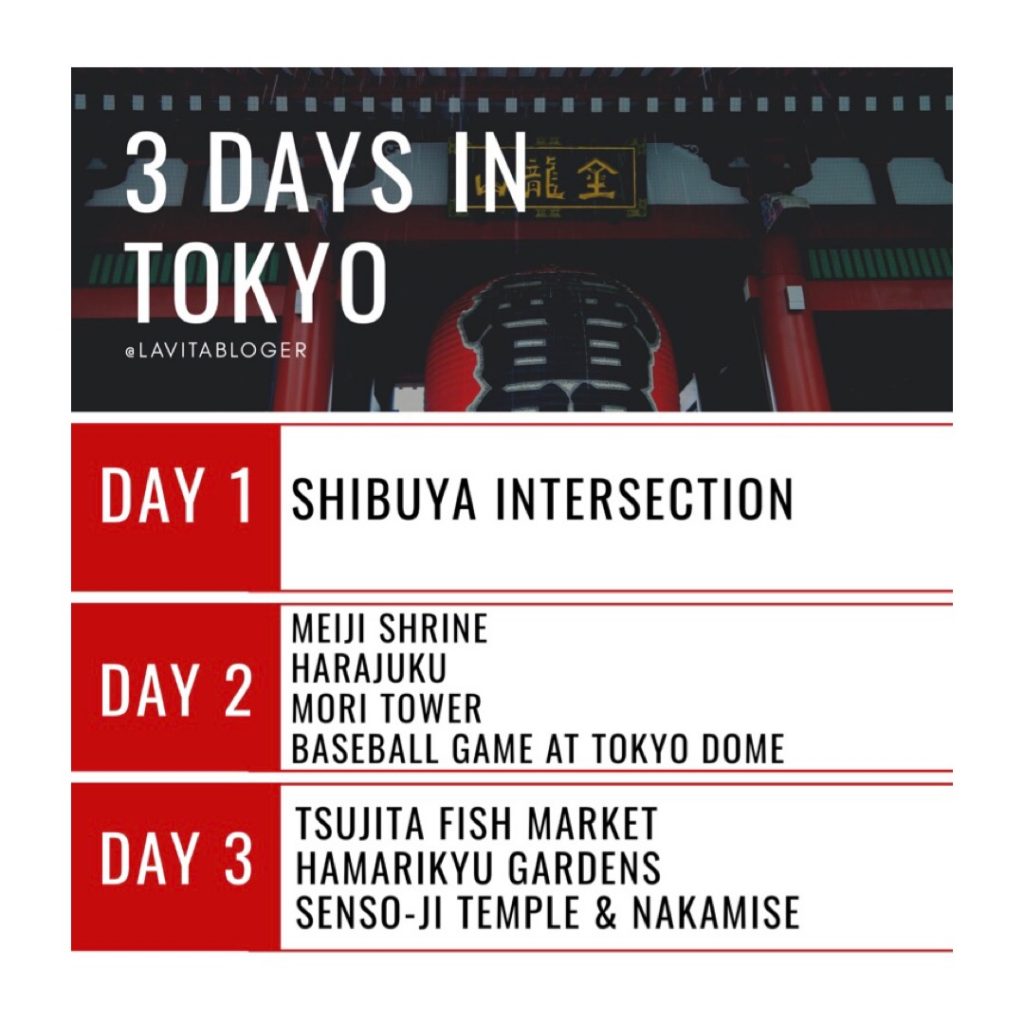
My Other East Asia Itineraries:
Beijing, China: https://www.lavitabloger.com/the-complete-travel-guide-for-beijing-china/
Seoul, Korea: https://www.lavitabloger.com/seoul-korea/
Tokyo Disney Resort: https://www.lavitabloger.com/tokyo-disney-resort/
